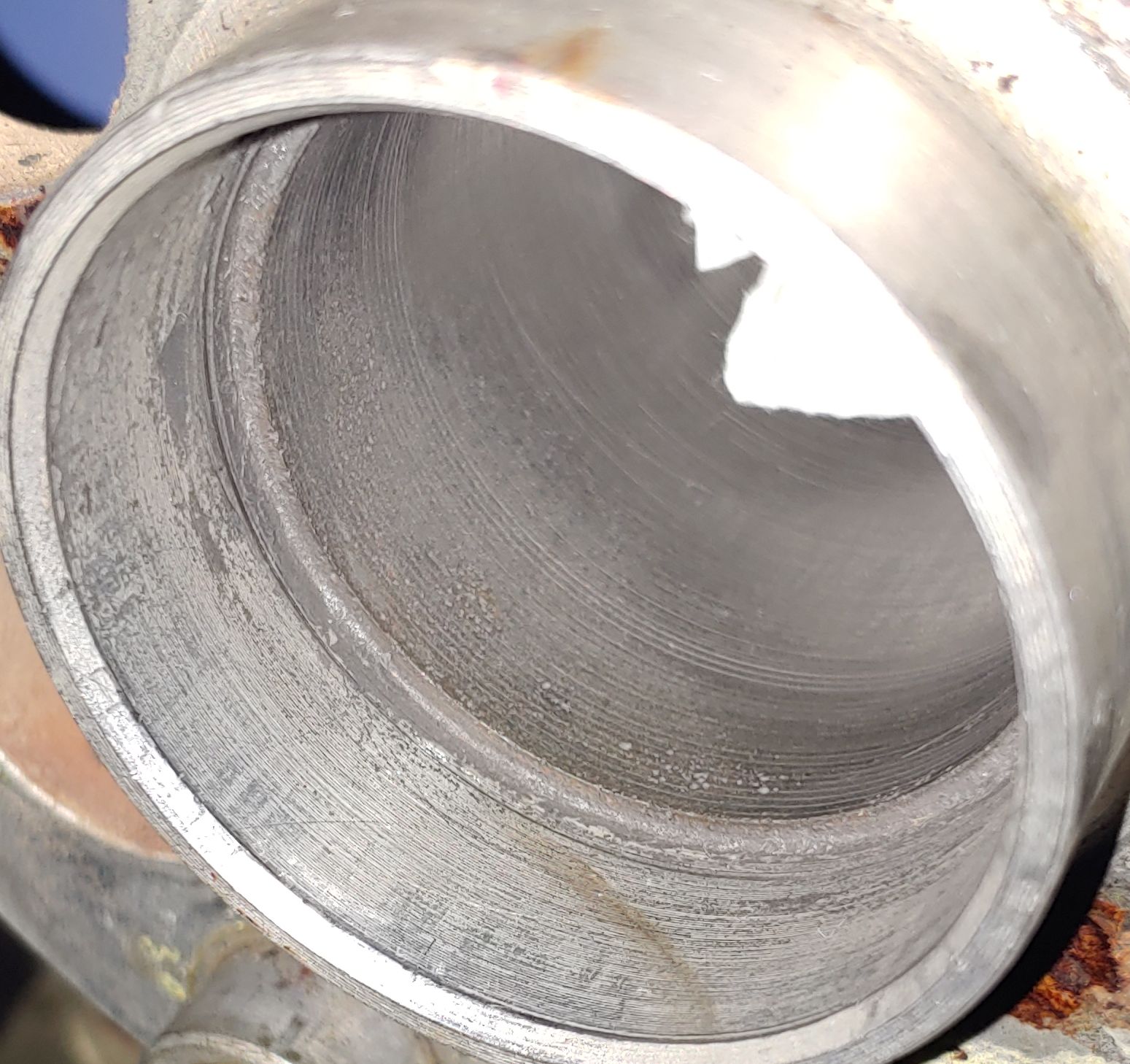- Joined
- Jul 7, 2017
- Messages
- 190
- Reaction score
- 82
It seems pretty straightforward: For any 160HP+ engine with more than 1000 hours or 10 years TSMOH, inspect the inside diameter of the hollow-crank-equipped four-cylinder Lycoming engines and if corrosion pits are found, take it out of service and overhaul the engine, replacing the crank at a minimum. If no pits are found in the crank i.d., button it up and do it again in 5 years.
Where the grey area lies in the pre-inspection steps:
Since the inside diameter of these cranks are 1.860”, why would they be concerned with an inside diameter limit if all they're expecting you to do is remove “surface corrosion”?
What constitutes a “suitable tool”?
0.050" is a LOT of material.
In discussing this AD with several shops and different A&Ps, I've come across a very wide array of interpretations of what can actually be done when performing this AD. They generally fall into one of five camps:
In researching what others have done to comply with this AD, I have found that there seems to have been a significant amount of paper-only compliance or judgment calls on the part of some A&P's with regards to what is actually considered pitting or corrosion and what a “suitable tool” is. This mild indifference may have been exacerbated by the perception that this AD seems excessive (only one confirmed failure out of 16,000+ potentially affected engines, though SIX others may have been affected).
As you can imagine, difference in time and cost between these two assessments is considerable as is the difference in the perception of what the intent of the the AD really is and what is airworthy.
The AD can be found here
TSB 505B is here
SB 530B is here
Where the grey area lies in the pre-inspection steps:
Remove surface corrosion using a suitable tool which will follow the existing contour of the I.D. and fine abrasive cloth. Prior to removing the corrosion, precaution must be taken to ensure that the material removed cannot contaminate the engine.
CAUTION - SURFACE CORROSION MUST BE REMOVED UNIFORMLY FROM THE CRANKSHAFT I.D. BUT THE I.D. CANNOT EXCEED 1.910 INCHES.
CAUTION - SURFACE CORROSION MUST BE REMOVED UNIFORMLY FROM THE CRANKSHAFT I.D. BUT THE I.D. CANNOT EXCEED 1.910 INCHES.
Since the inside diameter of these cranks are 1.860”, why would they be concerned with an inside diameter limit if all they're expecting you to do is remove “surface corrosion”?
What constitutes a “suitable tool”?
0.050" is a LOT of material.
In discussing this AD with several shops and different A&Ps, I've come across a very wide array of interpretations of what can actually be done when performing this AD. They generally fall into one of five camps:
- Pop off the expansion plug, clean off the gunk and if you see any pits, corrosion or anything that doesn't look factory-fresh, the engine must be overhauled and the crank replaced. Period.
- Same as above, but if the crank is within service limits, you can have it machined, MPI'ed, coated per SB 530B and reused during the overhaul, rather than replacing it.
- Same as above, but only fix the AD-affected area of the crank per SB 530B and reassemble the motor as-is.
- If, during the “cleaning and removal of corrosion” of the inside bore using the “suitable tool”, you end up removing surface imperfections while staying inside the service limit of 1.91”, and therefore observe no pitting, then the crank is good you can send it back into service for another 5 years.
- Same as above and in addition, perform FPI, coat the i.d. with Urethabond 104 and stamp the pilot flange with "PID", thereby terminating the AD
In researching what others have done to comply with this AD, I have found that there seems to have been a significant amount of paper-only compliance or judgment calls on the part of some A&P's with regards to what is actually considered pitting or corrosion and what a “suitable tool” is. This mild indifference may have been exacerbated by the perception that this AD seems excessive (only one confirmed failure out of 16,000+ potentially affected engines, though SIX others may have been affected).
This motor was factory-rebuilt in 1991. It has about 1400 hours on it now. Oil analysis every 25-hour change (which is about every 35 days) has been clean and consistent.
A recent investigation under the AD revealed this:

The current A&P (who performs the annuals on this plane) falls into category #1. His assessment was: "This isn't eligible for reoccurring 100-hour FPI inspections because it has been more than 10 years since the motor was overhauled and more than 10 years since the AD was released."
While making preparations for an overhaul, the airplane's former owner's A&P was extremely interested in inspecting the crankshaft himself.
His reaction was category #5 from above. He felt that this is a minor defect and not in the "spirit" of the AD.
A recent investigation under the AD revealed this:

The current A&P (who performs the annuals on this plane) falls into category #1. His assessment was: "This isn't eligible for reoccurring 100-hour FPI inspections because it has been more than 10 years since the motor was overhauled and more than 10 years since the AD was released."
While making preparations for an overhaul, the airplane's former owner's A&P was extremely interested in inspecting the crankshaft himself.
His reaction was category #5 from above. He felt that this is a minor defect and not in the "spirit" of the AD.
As you can imagine, difference in time and cost between these two assessments is considerable as is the difference in the perception of what the intent of the the AD really is and what is airworthy.
The AD can be found here
TSB 505B is here
SB 530B is here



